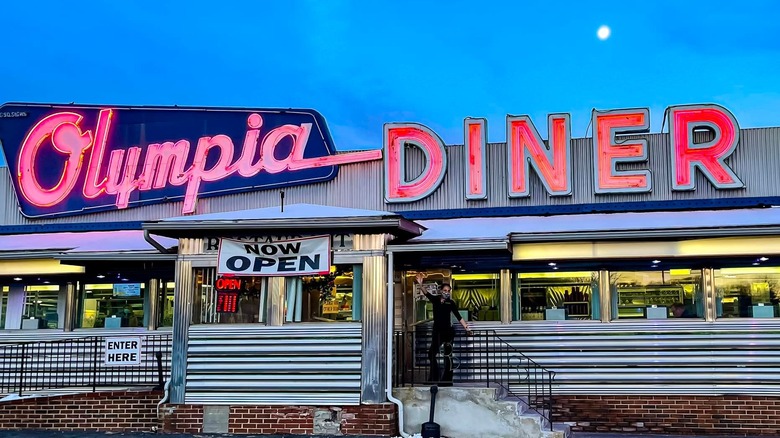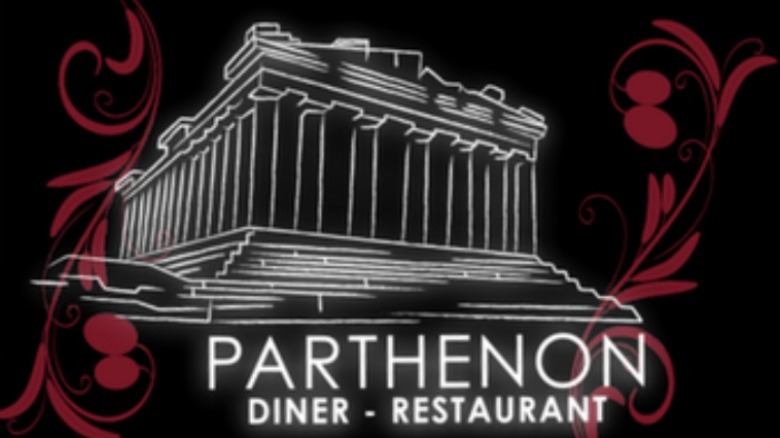The Reason So Many Diners Have Greek Roots
Who doesn't love sliding into a vinyl booth at a classic diner? A timeless dining experience offering no-nonsense comfort food such as thick milkshakes, salty fries, greasy burgers, and lemon meringue pie, diners form a vital part of the American experience. But as quintessentially American as diners are, a large percentage of them are owned by first- or second-generation Greek families, as you may have noticed when sitting down in a greasy spoon whose name is some variation of Athena, Acropolis, or Parthenon.
A 1996 New York Times article states that about two-thirds of New York City's diners are Greek-owned. New Jersey has more diners than any other state, most of which are Greek owned NJ.com. With decor that might feature elaborate fluted columns, Greek flags, and laurel wreaths, Greek-owned diner menus might also pepper in some homeland dishes among the American fare: think this traditional spanakopita, moussaka, and gyros, to name a few (via MenuPix). And like many American culinary stories, this is one rooted in immigration patterns.
A wave of Greek immigration in the early 1900s led to the founding of many Greek diners
According to The Hellenic American Project, the so-called Great Migration began in the 1880s as Europeans emigrated to the U.S. to participate in fledgling American industrialization. One of the first waves, or 421,000 Greek immigrants, left Greece between 1890 and 1921 to settle in America, primarily on the east coast, but in midwest cities such as Chicago, Detroit, and Pittsburgh as well. These areas are chock-full of Greek diner owners who started as unskilled immigrants, found jobs in existing cafés and restaurants, and eventually worked their way up from bussers or dishwashers, according to Kitchn. "Not many opportunities were open to them, but one thing they could do, because it was not the most popular job, was work in a diner or luncheonette, and do menial stuff, like washing dishes," Michael C. Gabriele, author of "The History of Diners in New Jersey," told the site. "A lot of Greeks had a hard time getting people to hire them."
Eventually, as Greek restaurant workers were able to save their wages and buy out restaurant owners, their spots took on the culture of the Greek "kaffenion" — a kaffenion being a homey restaurant with simple menus serving up lots of coffee and anise-flavored ouzo (via The New York Times).
Greek diners persist today, but their future is uncertain
Anyone who's traveled in the Northeastern U.S. has likely plunked down at the counter of an Olympia or Pandora Diner, whether to indulge in American grub such as eggs and home fries or more Mediterranean fare such as Greek salad or lemon potatoes. Many Greek-owned diners established in the early 1900s are still going strong, according to Kitchn, but the tradition might be in danger as the children and grandchildren of the original owners move into other fields to make a living. After all, running a busy diner — whose menu often lists pages upon pages of dishes — is not easy work, John Velisaris, the second-generation owner of Ritter's Diner in Pittsburgh, told the outlet, "The restaurant business, especially when you never close, has its challenges and requires an incredibly strong work ethic."
Velisaris told the outlet that he hopes his children will want to take Ritter's into the third generation of family ownership, but he's not sure they will stay on. "I don't really expect the next generation to continue in the family business, but my dad didn't think I'd be working with him either, so I guess you never know."


